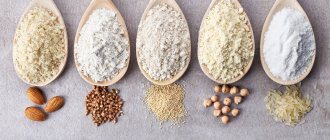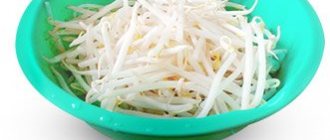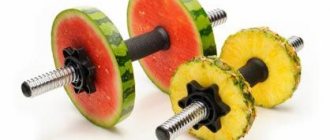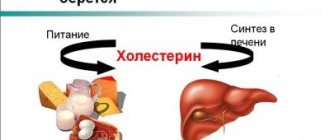Folic acid, why do we need it?
Folic acid is necessary for our body for the normal functioning of the hematopoietic system (promotes the normal production of red blood cells), the cardiovascular system, the immune system (increases resistance to infectious, viral and colds), the gastrointestinal tract (protects against the appearance of ulcers, gastritis and etc.), ensures normal growth of children and adolescents.
The joy hormone serotonin is produced thanks to folic acid, vitamin B9 delays menopause in women, promotes stress resistance and gives vigor to our body, and during pregnancy it is the main vitamin for both the child and the mother.
Folic acid acts on cancer cells, destroying them, it also treats infectious inflammation of the gums in dentistry, and it is indispensable for radiation sickness after radiation exposure.
The role of vitamin in the human body
Folic acid (folate, pteroylglutamic acid) is a water-soluble B vitamin that is not produced in human tissues. The main synthesis in the body occurs due to the microflora of the gastrointestinal tract, the remaining part of the substance comes from the outside (from food, synthetic forms of the vitamin in preparations).
Functions of folic acid.
Folates perform the following biological functions:
- regulate the production and development of new cells, which is important in early childhood and childhood (due to intensive growth, an increased amount of nutrients is required);
- participate in the synthesis of DNA molecules (disruption of this process threatens the appearance of cancerous tumors);
- support the formation of bone tissue cells, which is why they are prescribed for osteoporosis, restless legs syndrome and other musculoskeletal disorders;
- promote hematopoiesis, influence the synthesis of erythrocyte precursor cells (red blood cells);
- stimulate the immune system, provoking the formation of new cells in it, which increases the body’s resistance and protective functions;
- participate in the production of organic compounds (choline, nucleic acids, purine), individual amino acids (serine, glycine, histidine, methionine);
- improve the activity of the cardiovascular system, reducing the concentration of homocysteine in the body (blood pressure, cholesterol levels, and blood clotting are stabilized);
- regulate the functions of the central nervous system (reduce the risk of developing Alzheimer's disease, prevent the development of depression and nervous exhaustion);
- have a healing effect on infectious lesions of the oral mucosa;
- stimulate the production of viable sperm.
The effect of vitamin B9 is enhanced in the presence of ascorbic acid, tocopherol, and B vitamins.
For pregnant
When planning or carrying a pregnancy, folic acid is prescribed to prevent the following pathologies :
- early termination of pregnancy;
- intrauterine disorders in fetal development;
- anemia;
- placental insufficiency;
- premature birth.
The positive effect of the substance on the reproductive functions of the female body has been established.
Folic acid for pregnant women.
Planning pregnancy against the background of thrombophilia requires complex treatment with vitamin B9 to correct the level of homocysteine, which increases thrombosis.
Pregnancy in this case is associated with the risk of eclampsia and decreased placental function, and therefore also requires the administration of folic acid.
With the participation of the substance, the risk of pathologies of the fetal neural tube, brain development disorders (anencephaly, microcephaly), and congenital spinal canal bifida is reduced.
Folic acid stimulates the full formation of organs and systems of the unborn child, ensures the replication of cells of the nervous, hematopoietic, skeletal and visual systems.
Folic acid deficiency
The following symptoms may indicate a lack of folic acid in the body:
- Early menopause
- Mental disorders, aggression and discontent
- Premature birth and fetal anomalies
- Congenital pathologies and developmental delays
- Skin diseases
- Pale skin
- Weakness and fatigue
- Insomnia, irritability and forgetfulness
- Dramatic weight loss
- Anemia
- Postpartum depression
Basic recommendations
Some recommendations for consuming vitamin B9 are as follows:
- When taking aspirin, the amount of folic acid in the body decreases.
- When using drugs for the treatment of tuberculosis and epilepsy, as well as during estrogen replacement therapy, it is necessary to additionally take vitamin B9.
- Corticosteroids flush the substance from the body, so it is better not to take them together.
- The effect of folic acid can be enhanced with vitamin C.
- When exposed to light, about 50% of the vitamin contained in foods is destroyed.
- Folic acid is destroyed by heat treatment. Under the influence of high temperatures, about 70-90% of the vitamin contained in vegetables is lost, 95% in meat, and more than 50% in eggs.
Article on the topic:
The hormone prolactin. Normal in the female body depending on age
Why do we need homocysteine?
Homocysteine is important for the body; it is an amino acid that is involved in the construction and nutrition of the cells of our body.
The homocysteine level changes throughout life, it is different, before puberty it is the same, at about 6-7 µmol/l, and in adults this indicator is 10-11 µmol/l. In men it is slightly higher due to muscle volume.
Laboratory indicators:
- Men 6-15 µmol/l
- Women 4.6-12.5 µmol/l
If it is above 10 µmol/l, then WHO considers this to be the threshold value for the risk of developing cardiovascular pathology.
If a woman is pregnant, then the indicators can vary from 4 to 12 µmol/l:
- in the second trimester – from 5.7 to 12 µmol/l
- in the third trimester – from 6 to 12 µmol/l
It should be noted that with age there is a gradual increase in homocysteine in the blood.
The main reasons for the increase in homocysteine
Lack of vitamins in the body. This test is most sensitive to folic acid and vitamins B1, B6, B12.
- It is always elevated among smokers
- If you are a big coffee lover, 5 cups a day or more, then a promotion is inevitable
- A sedentary lifestyle leads to increased
- Renal dysfunction
- Excessive amounts of alcohol lead to an increase, and moderate amounts, on the contrary, lower its level.
With an increased amount of homocysteine in the body, it begins to act intensely on the inner wall of the artery, on the endothelium. Thus, it damages it and provokes the formation of blood clots and atherosclerotic plaques.
And if you look at the numbers, scientists have proven that an increase of just 5 units in homocysteine levels increases the risk of vascular damage by 80% in females and by 60% in males.
And the biggest risk is the occurrence of Alzheimer's disease (indicator above 15 µmol/l), dementia and dementia.
Therefore, it is worth checking your homocysteine level yourself if you have arterial hypertension, heart disease, and have relatives with strokes, heart attacks, or thrombosis under the age of 45.
The body's need for folic acid
Folic acid, as you can see, is very important for health. It is also called Vitamin B9. It is necessary for:
- Growth, reproductive system of both women and men
- Heart and blood vessels
- Immune system
- To all pregnant women for the normal development of the fetus, since the baby’s organs are forming and placental insufficiency also occurs, there is a threat of miscarriage
It is necessary to take into account the daily need of our body for folic acid - this is from 200 to 400 mcg. Below are the figures for the folic acid content in 100 grams. product, and a list of foods that are rich in folic acid.
Read on the topic: Why do we need succinic acid? Beneficial properties for the body
But vitamin B9 or folic acid is absorbed together with vitamin B12. If there is a deficiency, then it will not be absorbed.
The benefits of folic acid: what is it for?
Vitamin B9 promotes the production of red blood cells, which replenish oxygen deficiency. Thanks to this, a person’s performance increases, the feeling of fatigue and nervousness decreases, the psychological state improves, and dizziness is eliminated.
In addition, the synthetic substance has many beneficial qualities for the functioning of the body.
Among them:
- increasing immunity;
- reduction of symptoms of stress, depression;
- improvement of mental thinking, memory;
- participation in the process of hematopoiesis;
- strengthening the heart muscle and blood vessels of the brain;
- removal of toxic substances;
- slowing down aging, cleansing the skin;
- improvement of the condition of hair and nail plates;
- ensuring cell growth required for the normal development of the child’s body and during pregnancy;
- elimination of anemia;
- promoting the proper functioning of the digestive system.
Folic acid is a valuable substance in dietetics for the purpose of weight loss. The vitamin ensures natural combustion and removal of lipids from the tissues of the human body.
What potential moms and dads need to know about folic acid
This is the most important product that should be in the diet of potential parents.
Lack or deficiency of folic acid increases the likelihood of a defect in the development of the spinal cord (neural tube defect). There is a possibility of having a handicapped baby.
When planning a pregnancy 3 months in advance, future mothers and fathers should make sure that there is enough folic acid on your table and not only in the form of food supplements.
And accordingly, during pregnancy it is also necessary to discuss how much folic acid a woman needs to take per day.
For example, a drug such as Smart Mil, produced by the American company Nature's Sunshine Products (NSP), contains 140 mcg of folic acid. The company's medical consultants believe that: "Folic acid itself is inactive."
In the body, folic acid is reduced to tetrahydrofolic acid (THFA) (using the enzyme dihydrofolate reductase) or to 5-methyltetrahydrofolate (metafolin) - maintaining the level of methionine in the cell, as well as the functioning of the folate cycle. The need for FA in the Russian Federation is 400-600 mcg.”
Mutation of the hemostasis gene MTHFR and folic acid, what is the connection?
But not everyone has complete absorption of folic acid if there is a mutation in the folate cycle. This can be determined by doing a DNA test in a laboratory. It is worth consulting with a geneticist about the advisability of determining the “breakage” of the gene, if such a possibility exists.
Those who have a mutation in the hemostasis gene MTHFR (mutation in the folate cycle genes) must take folic acid. And this is about 30-40% of the country's population.
If you have this genome mutation, then we can assume that you have a tendency to:
- to atherosclerosis
- Alzheimer's disease
- attention deficit hyperactivity disorder (ADHD)
- autoimmune disease
- autism
- migraine with aura
- fetal spina bifida
- addiction of any kind
- Down syndrome
- fibromyalgia
- chemical sensitivity
But it is worth understanding that this mutation is just a tendency to these diseases . And therefore, you should pay attention to your diet, where your diet must contain folic acid in foods.
If, however, this mutation is manifested, then you have poor absorption of folic acid and B vitamins, especially vitamin B12.
Mutation of these genes can manifest itself in one or two alleles, then the risk of developing many pathologies increases significantly. And atypical reactions occur in the body, for example, the metabolism of some substances is disrupted, and nutrients, vitamins and minerals may not be absorbed in the stomach and small intestine.
And at the genetic level, the amounts of neurotransmitters and hormones released can change. And all this affects cholesterol levels, endocrine functions, digestion and brain functions.
People with a mutation in the hemostasis gene MTHFR need to take natural folic acid, since synthetic acid is poorly absorbed and may even worsen.
They require a bioavailable form of folic acid:
- L-methylfolate
- Methyl form of vitamin B9
Advice. We recommend that you discuss your situation with your doctor before purchasing. When purchasing, pay attention to the main active ingredient:
- Methylfolate
- L-methylfolate
- Levomefolic acid
- 5-methyltetrahydrofolate
- metafolin
All imported dietary supplements usually contain the inscription Folate on the label. If it says Folic acid, then it is regular folic acid.
We recommend looking at folates on the iHerb website.
Table of folic acid content in foods
Consuming a substance in larger quantities than the daily requirement may lead to an overdose. Symptoms may include the following: bloating, trouble sleeping at night, nausea, vomiting. In this case, you need to contact your doctor and reduce the dose of the drug.
What foods contain folic acid?
- Greenery. This is the first thing you need to pay attention to. Fresh parsley and lettuce are very rich in this vitamin.
- Vegetables are the main source of nutrients for the body. They contain not only the required daily requirement for a person of folic acid, but also many other useful microelements that have a beneficial effect on health.
- Asparagus. This plant has long been considered medicinal. Any variety contains copper, iron, calcium, phosphorus and a huge amount of vitamins, including B9. Asparagus regulates blood pressure and is a dietary product, so there are no contraindications to its use.
- Fruits. If you want to know where folic acid is found and which foods contain the most of it, then pay attention to citrus fruits. For example: 100 grams of lemon will give you about 80% of the daily vitamin requirement. It is also useful to eat oranges, kiwi, bananas, pears and apples.
- Whole grain products. It is recommended to consume this product in sprouted form, without additional heat treatment. It is perfectly absorbed by the body and provides the necessary amount of vitamins of all groups.
- Nuts. The only product containing folic acid in excess. 100 grams of regular peanuts provide approximately 240 mcg of vitamin B9, so you need to eat the product in moderation. Nuts are especially recommended during lactation in women.
- Seeds. It is commonly believed that they only clog the stomach, but this is not so. It doesn’t matter in what form you consume them - the product contains vitamins B6, B9, E, which have a beneficial effect on human health.
- Where is folic acid found, in what foods can it be found in summer? Almost all of them. Watermelon season is a great way to replenish the amount of B9 your body needs.
- Corn. In the summer, it is very useful to eat it fresh, but if you want to try your favorite sugar in winter, a canned product is quite suitable. Of course, it contains a little less vitamins, but in any case it will not only be tasty, but also healthy.
- Bread. Many women refuse to eat bread for the reason that it spoils their figure. However, if we talk about which foods contain the vitamin folic acid, then grain bread simply cannot be ignored. This is not only a storehouse of B9, but also an excellent option for normalizing metabolism and removing excess fats from the body.
- Do you want a little something exotic during pregnancy? Feel free to buy yourself a few ripe avocados. One fruit contains approximately 22% of vitamin B9 from the dose that should be consumed per day. In addition, this fruit is rich in other beneficial substances. Despite all its beneficial properties, avocado is not recommended for consumption during breastfeeding. If it is harmless for the mother, it may cause an upset stomach in the baby.
- If you're wondering which foods contain more folic acid than plant-based foods, chicken liver is a great alternative. 100 grams contain approximately 240 mcg of vitamin B9.
- Cod liver is another product that people consume in canned form. This delicacy is not only tasty and nutritious, but also rich in vitamins, proteins and fish oil.
- What foods contain folic acid and vitamin E? Of course, in eggs. Moreover, we are not talking about chicken, but about quail product. Scientists have proven that it is very useful to consume them raw. In this way, the human body receives all the valuable microelements to maintain excellent health. Quail eggs are not capable of causing an allergic reaction, so they can be consumed by pregnant women and even children at any age.
- Cereals are a particularly useful product for women during breastfeeding. Rice, oatmeal, and buckwheat improve lactation and provide the necessary dose of vitamin B9 for the body.
Now you know exactly which foods contain folic acid. The list presented above details where and in what quantities this vitamin can be found.
It may seem that consuming folic acid is only beneficial for women. This is wrong. During pregnancy planning, vitamins are recommended for both sexes.
It is especially important for men to know which foods contain folic acid and zinc, because these microelements have a beneficial effect on sperm and the general health of the future father.
Vitamin B12 and folic acid are two vitamins that are involved in the maturation and development of blood cells, as well as the formation of red blood cells. The daily intake of B12 is much less than B9, however, in order to avoid anemia, you need to remember about this vitamin.
Most products containing folic acid also contain vitamin B12. This includes: meat, kidneys, liver, eggs, dairy products, fish, cheese, cottage cheese, wholemeal flour, honey, yeast.
Products containing folic acid and vitamin E: walnuts, hazelnuts, almonds, sunflower seeds, peanuts, buckwheat, rice, oatmeal, peas, beans, margarine, onions, celery, carrots, spinach, parsley, Brussels sprouts. But meat and milk, contrary to stereotypes, contain very small amounts of vitamin E.
Folacin decomposes when exposed to sunlight, so it is better to hide vegetables and herbs in the refrigerator, and store nuts in a dark cupboard. They should not be saved for a long time; this also reduces the concentration of beneficial compounds. Do not forget that greenhouse greens contain fewer vitamins than those from the garden.
In addition, foods rich in folic acid should not be cooked for long, since it and other valuable substances are destroyed at high temperatures. During heat treatment, you can lose from 50 to 70% of the valuable substance.
It is best to cook dishes by steaming or in a minimal amount of water; this is a water-soluble vitamin and during cooking it will partially turn into a decoction.
The fact is that the solubility of folacin in boiling water, especially salted water, is much higher than in cold water. Don't neglect these simple rules; they will really help preserve folates during cooking.
Human health is impossible without a sufficient amount of vitamins. They are especially important during pregnancy, since at this time the need for them greatly increases. A proper balanced diet will provide the body with the necessary portions of folacin and then pills will not be needed.
For pregnant
Foods rich in folic acid are presented in the table.
| Product name | Amount of folic acid in mg per 100 g of product | Product name | Amount of folic acid in mg per 100 g of product |
| beef liver | 230 | carrot | 7,1 |
| grain, wheat and rye bread | 25 | Cod liver | 8 |
| Brussels sprouts | 30 | pork fat | 109 |
| fat cottage cheese | 34 | bun | 29 |
| Roquefort cheese | 38 | barley, buckwheat | 30 |
| Wheat groats | 39 | Rye flour | 31 |
| salad | 47 | Wheat flour | 34 |
| kidneys | 55 | White mushrooms | 34,5 |
| hazelnuts, spinach | 67 | cocoa powder | 39 |
| powdered milk | 79 | heart | 44 |
| horse mackerel | 29 | walnuts | 55 |
| cream | 9 | oat groats | 76 |
| tomatoes | 9 | potato | 28 |
| green pea | 10 | beef | 7 |
| processed cheese | 11 | onion | 7,4 |
| pumpkin | 13 | White cabbage | 8 |
| red bell pepper | 13 | butter | 9 |
| eggplant | 16 | cod | 9 |
| premium pasta | 17,5 | beet | 10,3 |
| wheat bread | 19 | brain | 12 |
| pearl barley | 21,5 | peas | 13 |
| loaf | 23 | green onions | 15 |
| apricots, grapefruits | 27 | rice cereal | 17 |
| boiled sausage, sausages | 2 | crackers, cookies | 18 |
| oranges | 3,05 | cheese “Russian” | 20 |
| mutton | 4 | premium wheat flour | 22,5 |
| melon, turnip, radish | 4,1 | rabbit meat | 26,1 |
| egg | 5 | pears, apples | 6,7 |
| curdled milk | 6 | grapes, cucumbers | 1 |
| kefir | 6,4 | chicken | 3 |
| peaches, watermelon | 6,8 | semi-smoked sausage | 4,4 |
| sour cream | 7 | tomato juice | 5 |
| cow's milk | 4 | canned fish | 6,1 |
To compensate for the lack of vitamin B9 in the body, you need to know which foods contain folic acid.
Asparagus
Asparagus contains a lot of protein, fiber, and flavonoids. It maintains homocysteine levels, relieves menstrual symptoms, normalizes blood sugar, and protects blood vessels. Regular consumption of the plant reduces the risk of osteoporosis, strengthens bones, and reduces the likelihood of fractures.
Asparagus is taken to prevent heart disease, type 2 diabetes, and Alzheimer's disease.
Asparagus is useful for ulcerative colitis. It prevents the formation of kidney stones and reduces inflammation.
Broccoli
Broccoli contains fiber, vegetable protein, chlorophyll, dietary fiber, minerals, vitamins, folate, beta-carotene. With regular use, the immune system is strengthened and resistance to various infections increases. The vegetable improves well-being in gastrointestinal diseases. Eating broccoli helps remove free radicals from the body and normalizes the nervous system.
The nutrients contained in cabbage prevent cholesterol from accumulating in the blood and have a beneficial effect on the functioning of the pancreas. Eating broccoli rejuvenates the body, strengthens the heart muscle, improves blood composition, and normalizes blood pressure.
Citrus fruit
Citrus fruits include: tangerine, orange, lemon, pomelo, grapefruit. They contain many different vitamins and microelements, as well as folates. Citrus fruits are necessary for the prevention of flu and colds. They strengthen the immune system, effectively fight infection, and normalize heart function and blood pressure. Eating such fruits benefits the health of a pregnant woman. They enrich her body with folic acid, which reduces the risk of developing various pathologies in the fetus.
Legumes bring great benefits to the body:
- cure cardiovascular diseases;
- stimulate the work of the heart muscle;
- do not allow the formation of atherosclerotic plaques and blood clots.











